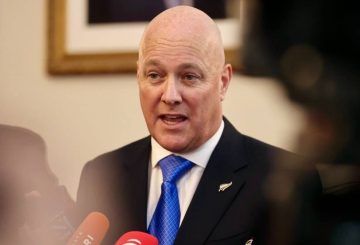Член городского совета выразил обеспокоенность тем, что еженедельный вывоз мусора в Окленде может быть сокращен до менее удобного двухнедельного режима. В проекте плана управления отходами и минимизации отходов Совета Окленда на 2024 год предлагается перейти на двухнедельный сбор мусора, но только после того, как у обочины будут хорошо установлены мусорные баки для пищевых отходов.
Цель совета — способствовать сокращению количества отходов. Однако член совета Манурева-Папакура Дэниел Ньюман считает, что сбор пищевых отходов должен дополнять, а не заменять еженедельный сбор мусора. Он назвал предлагаемое изменение одним из самых неудобных и непроверенных предложений, которые когда-либо высказывали муниципальные чиновники, и предсказал, что оно будет очень непопулярно среди многих жителей Окленда.
Ньюман утверждает, что решение о том, нужно ли им еженедельно собирать мусор, должны домохозяйства Окленда, а не политики и муниципальные служащие. Он обвинил некоторых членов совета в попытке заставить жителей Окленда изменить поведение, отказав им в выборе. Он также призвал жителей высказать свое мнение о плане совета, предупредив, что еженедельный сбор мусора может оказаться под угрозой, если жители Окленда не убедят совет сохранить его.
В проекте совета также упоминалось, что оно должно оказать поддержку жителям, которые опасаются переходить на вывоз мусора раз в две недели, особенно тем, кто проживает в многодетных семьях. Газета New Zealand Herald сообщила, что сокращение объема услуг может начаться с 2026 года. Цель состоит в том, чтобы сократить количество мусора на обочинах дорог с базового уровня 2022 года (141 кг) до 120 кг на человека к 2028 году и до 100 кг к 2030 году. Ожидается, что недавнее повсеместное внедрение мусорных баков для пищевых отходов поможет достичь этой цели за счет сокращения содержимого мусорных баков до 41 процента по весу. В настоящее время совет собирает мусорные баки, пригодные для вторичной переработки, раз в две недели.
Совет признал дефицит бюджета, рассматривая потенциальную продажу активов и значительное повышение ставок. Часть акций совета в аэропорту Окленда уже продана, а мэр Уэйн Браун предложил продать порт Окленд в долгосрочную аренду и вложить вырученные средства в новый инвестиционный фонд размером от 3 до 4 миллиардов долларов. Однако члены совета Майк Ли и Джон Уотсон раскритиковали это предложение: Ли назвал его «полосой активов», а Уотсон предупредил, что на время действия договора аренды город потеряет контроль над крупным активом.





























































